The microRNA miR-31 inhibits CD8+ T cell function in chronic viral infection
- PMID: 28530712
- PMCID: PMC5753758
- DOI: 10.1038/ni.3755
The microRNA miR-31 inhibits CD8+ T cell function in chronic viral infection
Erratum in
-
Erratum: The microRNA miR-31 inhibits CD8+ T cell function in chronic viral infection.Nat Immunol. 2017 Sep 19;18(10):1173. doi: 10.1038/ni1017-1173d. Nat Immunol. 2017. PMID: 28926530 No abstract available.
Abstract
During infection, antigen-specific T cells undergo tightly regulated developmental transitions controlled by transcriptional and post-transcriptional regulation of gene expression. We found that the microRNA miR-31 was strongly induced by activation of the T cell antigen receptor (TCR) in a pathway involving calcium and activation of the transcription factor NFAT. During chronic infection with lymphocytic choriomeningitis virus (LCMV) clone 13, miR-31-deficent mice recovered from clinical disease, while wild-type mice continued to show signs of disease. This disease phenotype was explained by the presence of larger numbers of cytokine-secreting LCMV-specific CD8+ T cells in miR-31-deficent mice than in wild-type mice. Mechanistically, miR-31 increased the sensitivity of T cells to type I interferons, which interfered with effector T cell function and increased the expression of several proteins related to T cell dysfunction during chronic infection. These studies identify miR-31 as an important regulator of T cell exhaustion in chronic infection.
Conflict of interest statement
The authors declare no competing financial interests.
Figures
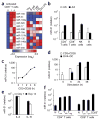
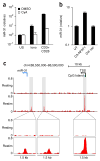

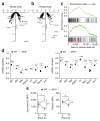

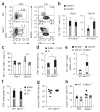
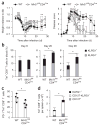

Comment in
-
miR-31: a key player in CD8 T-cell exhaustion.Cell Mol Immunol. 2017 Dec;14(12):954-956. doi: 10.1038/cmi.2017.89. Epub 2017 Sep 11. Cell Mol Immunol. 2017. PMID: 28890544 Free PMC article. No abstract available.
-
MicroRNA 31 inhibits CD8+ T-cell function by increasing its sensitivity to type I interferon signaling in chronic viral infection.Cell Mol Immunol. 2018 May;15(5):533-535. doi: 10.1038/cmi.2017.99. Epub 2017 Oct 2. Cell Mol Immunol. 2018. PMID: 28967879 Free PMC article. No abstract available.
-
Crucial role of miR-31 in induction of CD8+ T-cell exhaustion and reinforcement of type 1 interferon signaling.Cell Mol Immunol. 2018 Jul;15(7):651-653. doi: 10.1038/cmi.2017.96. Epub 2017 Nov 27. Cell Mol Immunol. 2018. PMID: 29176744 Free PMC article. No abstract available.
-
miRNA-31 regulates the CD8 T cell response to type I IFNs during chronic infection.Cell Mol Immunol. 2018 Apr;15(4):402-404. doi: 10.1038/cmi.2017.80. Epub 2017 Sep 4. Cell Mol Immunol. 2018. PMID: 29532790 Free PMC article. No abstract available.
Similar articles
-
Profiling Virus-Specific Tcf1+ T Cell Repertoires During Acute and Chronic Viral Infection.Front Immunol. 2020 May 29;11:986. doi: 10.3389/fimmu.2020.00986. eCollection 2020. Front Immunol. 2020. PMID: 32547546 Free PMC article.
-
PD-L1 Checkpoint Inhibition Narrows the Antigen-Specific T Cell Receptor Repertoire in Chronic Lymphocytic Choriomeningitis Virus Infection.J Virol. 2020 Aug 31;94(18):e00795-20. doi: 10.1128/JVI.00795-20. Print 2020 Aug 31. J Virol. 2020. PMID: 32641478 Free PMC article.
-
MicroRNA-17~92 regulates effector and memory CD8 T-cell fates by modulating proliferation in response to infections.Blood. 2013 May 30;121(22):4473-83. doi: 10.1182/blood-2012-06-435412. Epub 2013 Apr 17. Blood. 2013. PMID: 23596046
-
Chronic LCMV Infection Is Fortified with Versatile Tactics to Suppress Host T Cell Immunity and Establish Viral Persistence.Viruses. 2021 Sep 29;13(10):1951. doi: 10.3390/v13101951. Viruses. 2021. PMID: 34696381 Free PMC article. Review.
-
Immunometabolism of infections.Nat Rev Immunol. 2020 Feb;20(2):79-80. doi: 10.1038/s41577-019-0266-9. Nat Rev Immunol. 2020. PMID: 31892735 Review. No abstract available.
Cited by
-
Widespread discrepancy in Nnt genotypes and genetic backgrounds complicates granzyme A and other knockout mouse studies.Elife. 2022 Feb 4;11:e70207. doi: 10.7554/eLife.70207. Elife. 2022. PMID: 35119362 Free PMC article.
-
A Combined mRNA- and miRNA-Sequencing Approach Reveals miRNAs as Potential Regulators of the Small Intestinal Transcriptome in Celiac Disease.Int J Mol Sci. 2021 Oct 21;22(21):11382. doi: 10.3390/ijms222111382. Int J Mol Sci. 2021. PMID: 34768815 Free PMC article.
-
MicroRNA-31 regulates T-cell metabolism via HIF1α and promotes chronic GVHD pathogenesis in mice.Blood Adv. 2022 May 24;6(10):3036-3052. doi: 10.1182/bloodadvances.2021005103. Blood Adv. 2022. PMID: 35073581 Free PMC article.
-
MicroRNA in vivo precipitation identifies miR-151-3p as a computational unpredictable miRNA to target Stat3 and inhibits innate IL-6 production.Cell Mol Immunol. 2018 Feb;15(2):99-110. doi: 10.1038/cmi.2017.82. Epub 2017 Sep 11. Cell Mol Immunol. 2018. PMID: 28890541 Free PMC article.
-
High miR-31-5p expression promotes colon adenocarcinoma progression by targeting TNS1.Aging (Albany NY). 2020 Apr 21;12(8):7480-7490. doi: 10.18632/aging.103096. Epub 2020 Apr 21. Aging (Albany NY). 2020. PMID: 32315285 Free PMC article.
References
-
- Wherry EJ, et al. Molecular signature of CD8+ T cell exhaustion during chronic viral infection. Immunity. 2007;27:670–684. - PubMed
MeSH terms
Substances
Grants and funding
LinkOut - more resources
Full Text Sources
Other Literature Sources
Molecular Biology Databases
Research Materials

